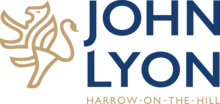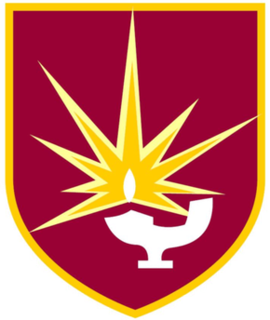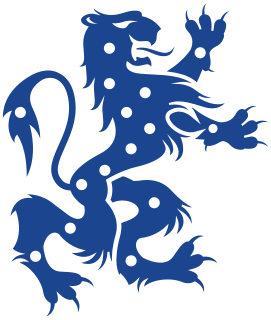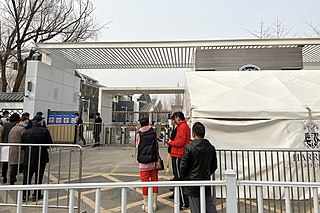Structure and curriculum
The governing body of Harrow School retains some control of the John Lyon School; most responsibilities, however, are delegated to a John Lyon board of governors (officially styled Committee of Management). A number of Harrow governors serve on this committee, alongside co-opted governors. Unlike many previous governing bodies in British schools, there is no academic staff involvement in overall school government.
The John Lyon School is divided into three age sections:
- Oldfield – Years 7 and 8
- Upper School – Years 9, 10 and 11
- Sixth Form – Lower Sixth and Upper Sixth
Oldfield
Students in the first two years at the John Lyon School are largely based in form rooms in Oldfield House. There are 3 forms in Year 7, and 3 in Year 8. Each form consists of approximately 20 pupils selected, following the school's 11+ entrance examination and interview.
Upper School
Year 9 forms a year group of somewhat larger size, with a large intake from the school's 13+ entrance examination; it is divided into five forms of approximately 20 pupils each.
In Years 10 and 11, students at The John Lyon School prepare for GCSE examinations. Most students take 9 or 10 subjects, some take 11 or 12 selected from the following: English Language, English Literature, Mathematics, Biology, Chemistry, Physics, French, Spanish, Ancient Greek, Latin, History, Geography, Computer Science, Drama, Music, Art, Religious Studies/Philosophy and Statistics.
The school offers the Mathematics, English Language, English Literature, Biology, Chemistry and Physics IGCSE, rather than the standard GCSE in these subjects.
A Higher Project Qualification is offered to academically able students at the end of year 10.
Provision is made for advanced progression at John Lyon School. Able mathematicians take the Mathematics IGCSE early at the end of Year 10, before following an additional mathematics course in Year 11 as a preparation for AS/A2 Level. All Latin students at the Lyon School achieve their first GCSE-equivalent award at the end of Year 10, before continuing to study for a second qualification at the end of Year 11.
In the Sixth Form, students are placed in tutor groups of 8-10 pupils. Students are expected to take four AS levels in their Lower Sixth year, and for three of those to be taken to A2 level at the end of their Upper Sixth Year. An Extended Project Qualification is also offered to academically able students from the Summer Term of the Lower Sixth.
Students may currently choose from the following subject offering: English Literature, Mathematics, Further Mathematics, French, Spanish, Biology, Chemistry, Physics, Psychology, Latin, Classical Civilisation, History, Geography, Economics, Business Studies, Government/Politics, Drama, Music, Music Technology, Art and Religious Studies. Critical Thinking is also available to be taken alongside AS and A2 modules, with tutoring outside the normal timetable.
The Thomas Blackwell Centre is mainly dedicated to sixth form students and features a study room, computer suite, common room, kitchen, locker spaces and an office for the Head Boy team. Sixth formers wear a suit and tie rather than a formal school uniform.
House system
Each student and teaching staff member of the School is randomly assigned upon entry to the school to one of four houses unless they have a familial link to a House:
- Butler (Blue)
- Moore (Yellow)
- Norwood (Green)
- Vaughan (Red)
Each house is led by a Head of House, assisted by a House Captain drawn from the Upper Sixth. While most house competitions are sporting in nature, there are also competitions in chess, debating, drama, music, reading, recitation and an annual Spelling Bee. The culmination of annual competition is Sports Day following which the Cock House Cup is awarded.
School Sport
Located on the main school site, John Lyon School's Sports Centre features a large sports hall, a newly refurbished gym, a fitness studio and a 25m swimming pool. The 25-acre sports facility at Sudbury Hill has an Astro pitch, ten football pitches, three cricket squares, an artificial wicket, a large pavilion with hospitality facilities, and an archery range. The School also accesses the sporting facilities at Harrow School, including a new athletics track, a nine-hole golf course and tennis, squash and badminton courts.
In the first four years, all pupils play football and hockey (Autumn and Spring terms), cricket (Summer term) during their games afternoons, supplemented with badminton, swimming, and gymnastics. In addition, Physical Education lessons are compulsory for students until the Sixth Form, at which point students also have a wider choice for their games afternoons, including archery, golf, rock climbing, squash, swimming, and tennis. Students from Year 10 onwards may substitute their games participation for involvement with the School's Combined Cadet Force.
John Lyon School has football and cricket teams at 1st XI, 2nd XI, 3rd XI, 4th XI, 5th XI, Under 15s, Under 14s, Under 13s and Under 12s levels.
The Festival of Cricket is held at Sudbury Hill on a Saturday in the summer term and sees a selection of school teams take on a team of Old Lyonians.
Expressive arts
A number of drama productions are held, the course of the school year, including a School Play at the end of Autumn Term and a large scale School Musical, typically staged during Spring Term at Harrow School's Ryan Theatre. These productions are supplemented with inter-House drama competitions at junior and senior level.
The choir are regularly invited to sing the office of Evensong at St Paul's Cathedral.
The school has two orchestras, two wind bands, a jazz band, a rock band, and an RnB band. There is a large school choir, in which all Year 7 students participate, and invitation-only Motet and Voice Choirs.
















